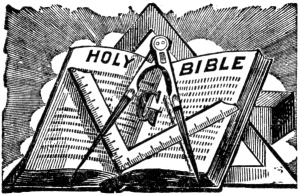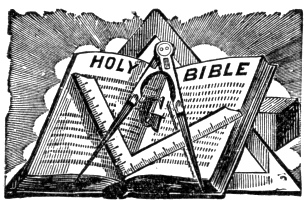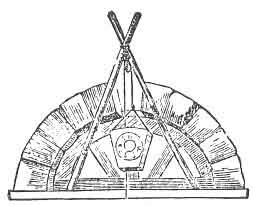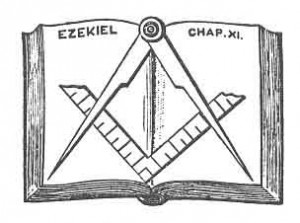Footnotes
87:1 Our present Third Degree is not architectural, but traditionary, historical, and legendary; its traditions being unfortunately hyperbolical; its history apocryphal, and its legends fabulous.–The Freemason’s Treasury, p. 222.
96:1 Here the conductor or some brother draws his hand across candidate’s naked belly: the sword is often used, especially if the initiation takes place in winter, the sword is left in a cold place–and when it is drawn across candidate’s belly, it has a very shocking effect, causing the candidate to jump or tremble.
97:1 What does it denote? Worldly possession.–Dr. Hemming.
That Tubal Cain gave first occasion to the name and worship of Vulcan been very probably conceived, both from the very great affinity of the names, and that Tubal Cain is expressly mentioned to be an instructor of every artificer in brass and iron; and as near relation as Apollo had to Vulcan, Jubal had to Tubal Cain, who was the inventor of music, or the father of all such as handle the harp and organ, which the Greeks attribute to Apollo.–Historical Landmarks, vol. ii. pp. 204–5.
99:1 The jewels of a Masters’ Lodge are suspended from blue velvet collars, bordered and embroidered with silver. At the point is a blue rosette, in the centre of which is a silver five-pointed star.
The apron is white, lined and bordered with blue. On the flap is delineated an eye, and on the area selections from the Master’s carpet. A blue silk scarf, trimmed with silver, having a blue rosette at the shoulder and hip, is worn from left to right.
The following are the jewels:
| The Worshipful Master |
wears |
a square. |
| The Past Master |
“ |
a compass opened on a quarter-circle. |
| The Senior Warden |
“ |
a level. |
| The Junior Warden |
“ |
a plumb. |
| The Secretary |
“ |
cross pens. |
| The Treasurer |
“ |
cross keys. |
| The Senior Deacon |
“ |
square and compass, with sun. |
| The Junior Deacon |
“ |
square and compass, with quarter moon. |
| The Stewards |
“ |
a cornucopia. |
| The Masters of Ceremonies |
“ |
cross swords. |
| The Tyler |
“ |
a sabre. |
105:1 In the progress of Masonry during the last century the fatal weapons underwent several changes. At the revival in 1717, they were called setting-tool, setting maul, and setting-beetle; later in the century, it was the twenty-four-inch gauge, square, and gavel; then the setting-tool, square, and rule; and now the plumb-rule, square, and strong or heavy maul.–The Freemason’s Treasury, p. 306.
107:1 Professor Stuart, of Andover, one of the most skilful linguists and earned men in the United States, has endeavored to show that the legend of the Third Degree is an imposture, “since the names of the criminals are formed from the Latin language, and not from the Hebrew, to which they have no affinity whatever.”–The Freemason’s Treasury, p. 213.
112:1 The system of Freemasonry, as practised in different countries and at different periods, is not uniform on this subject; and I feel so little at liberty to bring forward evidence on such a delicate point, that I am afraid it will he impossible to place it clearly before the brethren. One system says fifteen Fellow Crafts went in search; another, twelve; and asserts that the three (murderers) left the sprig of acacia: others affirm that it was the recanters who placed it there as a mark. Some say, that many days were expended in the search, and that the lost (body) was found near the seaside; others, that it was soon discovered near Jerusalem. The York Masons name the seaside; the Americans say, Mount Moriah; the French, Monet Lebanon. In one account, the brethren disperse widely, east, west, and south; in another, they keep within hail of each other.–Historical Landmarks, vol. ii. p. 148.

Moe is the founder of GnosticWarrior.com. He is a father, husband, author, martial arts black belt, and an expert in Gnosticism, the occult, and esotericism.






